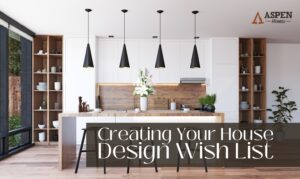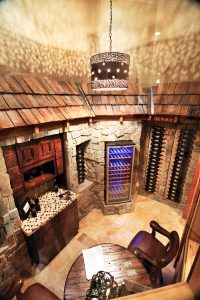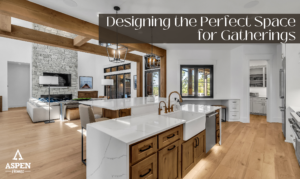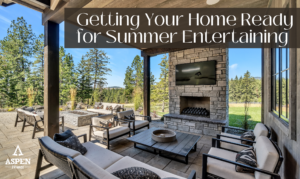Creating Your House Design Wish List
| 4 Minutes

Being able to build a custom home is a dream many people have, but few can achieve. Yet if that dream becomes a reality for you, you may quickly find that the prospect can also be daunting: Where do I start? This is a common worry, but there are some strategies you can employ to help you begin the process. One helpful technique is to put together a “design wish list.”
Building a custom home has many aspects, from site selection to choosing cabinet fixtures, and trying to order your thoughts on such an expansive project can become chaotic. By starting with a wish list of items in no particular order, you can get your random and disconnected thoughts out of your head and onto paper, where they can eventually be organized and prioritized, giving shape to your dream home.
When you create a design wish list, you soon find that your ideas will start to flow more easily, and you will be able to put them in perspective. Here are some things you can try to get inspiration and hone your tastes and preferences.
- Copying is the Sincerest Form of Flattery: Most people have seen features in other homes that appeal to them, whether it is a fantastic walk-in closet or a dramatic fireplace. Jot those ideas down that you already know you like, and look for others that appeal to you, whether in a friend’s home, a magazine you saw, a model home you toured, on Pinterest sites, or from other sources. You don’t need to invent anything new – chances are, what you would like has already been built by someone else somewhere else, and you are free to steal those ideas to incorporate into your own home. Be free with your list even if you find conflicting design ideas. As your project comes together, you will eventually settle on the choice that fits better with your overall design.
- Dream Big on Paper: Take a moment to jot down everything you’ve ever dreamed of in a home, from layout and architecture to finishes and furnishings. Consider sketching your ideas or maintaining a journal of clippings and articles to visualize your options. Don’t screen out any ideas at this early stage, even if you think something may be too expensive or outlandish to build. You will have time to refine your ideas as the project takes shape. You may be able to modify these ideas to suit your budget and style even if they do not seem to fit at the outset.
- Niceties vs. Necessities: As you develop your list and put items down, it helps to categorize your dream home elements into “niceties” and “necessities.” Distinguish between your needs and wants; as you refine your list, these notations will help you make better decisions. However, do not be overly utilitarian in making these distinctions. If you really want a walk-in closet, don’t “settle” for a reach-in closet if it will bother you every time you get dressed in the years to come. Be conscious of what you are willing to compromise on and what is important to you, and don’t hesitate to mark something as a “necessity” if it is very important to you. After all, what is the point of building a custom home if you won’t get the home you want?
- Ask Practical Questions: When compiling your wish list, ask yourself and other family members living with you some practical questions to help you identify what matters. Some questions can be:
- What did you like most about your previous home(s)?
- What did you like least about your previous home(s)?
- What houses have you been in that you liked the most and why?
- Which room is the most important to you?
- How long do you plan to live in the home, and what features should it have to meet your future needs?
- What type of floor plans are you drawn to?
- Don’t Limit Your Purview: Your wish list can include everything from site features (having a view, large/small lot, detached workshop, close to town, etc.) to building materials (stone, wood, glass) to architectural style (modern, rustic, Craftsman, Victorian, Colonial, etc.) to floor layout (single story, open plan, traditional, etc.) and even things like the number of garage spaces you want. The more information you provide, the better you will be able to visualize what your home should look like, and the better you can narrow down your list later by seeing what will work as a unified whole.
- Create a Budget: While not technically part of the wish list, you should also have some concept of budget to temper your expectations as the scope of the project comes together. While dreams have no bounds, unfortunately, budgets do. Be realistic about what your home-building budget will be, taking into account that custom home building will have costs that are often not seen when purchasing an existing home. These costs include site preparation, landscaping, infrastructure, permits, and so on. Calculate and commit to a budget so that when it comes to your selection process down the line, your budget can accurately guide you.
As you embark on the exciting journey of creating a custom home, Aspen Homes is here to partner with you every step of the way. We are happy to show you ideas regarding home design and layout, help you understand the costs of building in North Idaho, and provide input on other items you may have questions about. If you’re searching for a reputable and reliable custom home builder in North Idaho, look no further than Aspen Homes. From site selection to move-in, we specialize in turning your dream home vision into reality. Contact Aspen Homes today.



